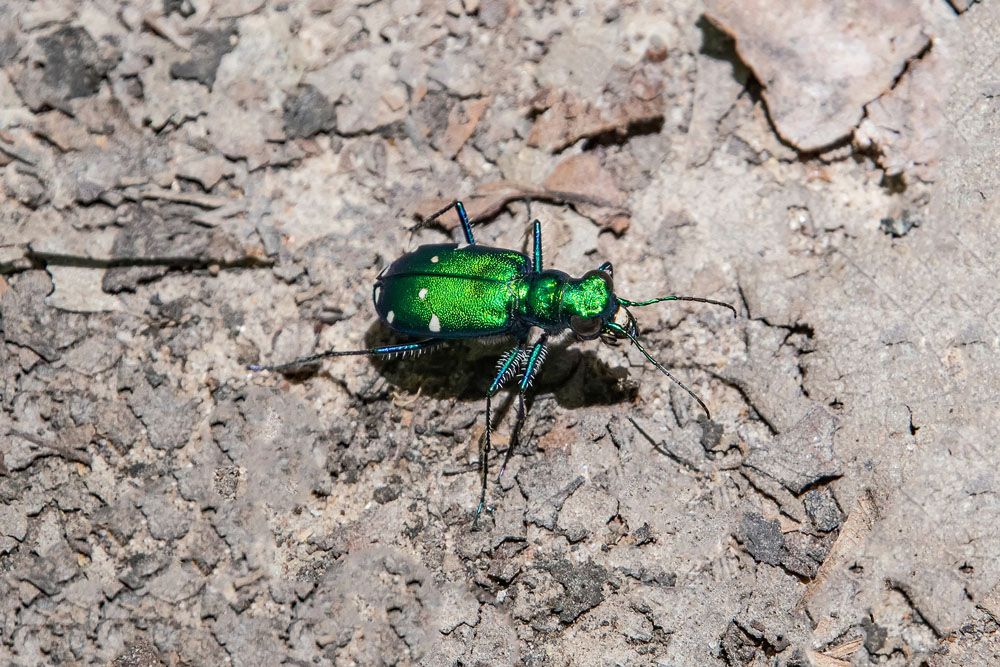
Tiger Beetle – Cicindela
Common Tiger Beetle
Genus: Cicindela (Subfamily: Cicindelinae, Tribe: Cicindleni, Subtribe: Cicindelina)
Common Name: Common Tiger Beetle
Appearance: They are named tiger beetles due to their voracious eating and quick flying habits. This genus is most common in the USA, having 20+ species in Florida. Having a metal-like shining body, these beetles have a variety of colors, including green, blue, orange, black, dull brown, etc. They are 10-20 mm long have round bulged eyes. They are very active runners and fliers, capturing their prey very quickly with their long mandibles. Most of the species’ elytra (wing cover) have line marks over them. C. sexguttata, The most commonly occurring species in North America, is also known as the six-spotted tiger beetle due to the presence of six white markings on its bluish elytra.
Host Plants or Food: Spiders, Caterpillars, and Ants
Territory: Throughout North America
Mode of Damage: Beneficial Garden Insect
Habits and Life History:
- Tiger beetles love to live in grasslands, coastal areas, woodlands, sandbars, sand dunes, etc.
- Adult females dug burrows in sandy soils and lay eggs there in depressions almost 2 feet deep.
- When the eggs hatch, the larvae come out and wait at the top of the burrow to capture the prey with its string mandible and don’t come out completely.
- The abdominal hook present on the dorsal side of the larval abdomen helps it hold its position in the burrow so that the victim can not pull it out.
- Some species have adults active in the spring and winter, while others have adults active throughout summer.
- They pass through four life stages, starting from eggs to larva to pupa to adult finally.
- They produce only one generation each year.
